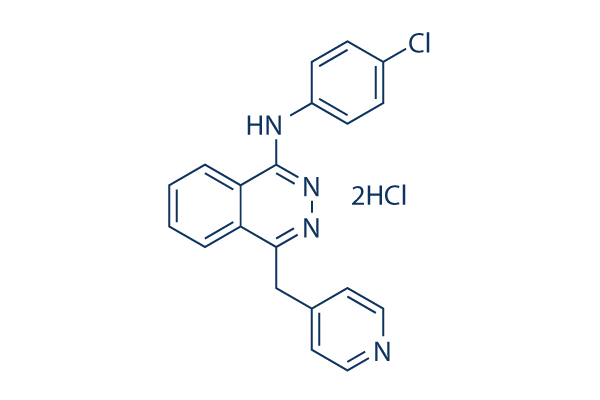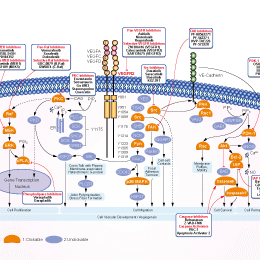
- Bioactive Compounds
- By Signaling Pathways
- PI3K/Akt/mTOR
- Epigenetics
- Methylation
- Immunology & Inflammation
- Protein Tyrosine Kinase
- Angiogenesis
- Apoptosis
- Autophagy
- ER stress & UPR
- JAK/STAT
- MAPK
- Cytoskeletal Signaling
- Cell Cycle
- TGF-beta/Smad
- DNA Damage/DNA Repair
- Compound Libraries
- Popular Compound Libraries
- Customize Library
- Clinical and FDA-approved Related
- Bioactive Compound Libraries
- Inhibitor Related
- Natural Product Related
- Metabolism Related
- Cell Death Related
- By Signaling Pathway
- By Disease
- Anti-infection and Antiviral Related
- Neuronal and Immunology Related
- Fragment and Covalent Related
- FDA-approved Drug Library
- FDA-approved & Passed Phase I Drug Library
- Preclinical/Clinical Compound Library
- Bioactive Compound Library-I
- Bioactive Compound Library-Ⅱ
- Kinase Inhibitor Library
- Express-Pick Library
- Natural Product Library
- Human Endogenous Metabolite Compound Library
- Alkaloid Compound LibraryNew
- Angiogenesis Related compound Library
- Anti-Aging Compound Library
- Anti-alzheimer Disease Compound Library
- Antibiotics compound Library
- Anti-cancer Compound Library
- Anti-cancer Compound Library-Ⅱ
- Anti-cancer Metabolism Compound Library
- Anti-Cardiovascular Disease Compound Library
- Anti-diabetic Compound Library
- Anti-infection Compound Library
- Antioxidant Compound Library
- Anti-parasitic Compound Library
- Antiviral Compound Library
- Apoptosis Compound Library
- Autophagy Compound Library
- Calcium Channel Blocker LibraryNew
- Cambridge Cancer Compound Library
- Carbohydrate Metabolism Compound LibraryNew
- Cell Cycle compound library
- CNS-Penetrant Compound Library
- Covalent Inhibitor Library
- Cytokine Inhibitor LibraryNew
- Cytoskeletal Signaling Pathway Compound Library
- DNA Damage/DNA Repair compound Library
- Drug-like Compound Library
- Endoplasmic Reticulum Stress Compound Library
- Epigenetics Compound Library
- Exosome Secretion Related Compound LibraryNew
- FDA-approved Anticancer Drug LibraryNew
- Ferroptosis Compound Library
- Flavonoid Compound Library
- Fragment Library
- Glutamine Metabolism Compound Library
- Glycolysis Compound Library
- GPCR Compound Library
- Gut Microbial Metabolite Library
- HIF-1 Signaling Pathway Compound Library
- Highly Selective Inhibitor Library
- Histone modification compound library
- HTS Library for Drug Discovery
- Human Hormone Related Compound LibraryNew
- Human Transcription Factor Compound LibraryNew
- Immunology/Inflammation Compound Library
- Inhibitor Library
- Ion Channel Ligand Library
- JAK/STAT compound library
- Lipid Metabolism Compound LibraryNew
- Macrocyclic Compound Library
- MAPK Inhibitor Library
- Medicine Food Homology Compound Library
- Metabolism Compound Library
- Methylation Compound Library
- Mouse Metabolite Compound LibraryNew
- Natural Organic Compound Library
- Neuronal Signaling Compound Library
- NF-κB Signaling Compound Library
- Nucleoside Analogue Library
- Obesity Compound Library
- Oxidative Stress Compound LibraryNew
- Plant Extract Library
- Phenotypic Screening Library
- PI3K/Akt Inhibitor Library
- Protease Inhibitor Library
- Protein-protein Interaction Inhibitor Library
- Pyroptosis Compound Library
- Small Molecule Immuno-Oncology Compound Library
- Mitochondria-Targeted Compound LibraryNew
- Stem Cell Differentiation Compound LibraryNew
- Stem Cell Signaling Compound Library
- Natural Phenol Compound LibraryNew
- Natural Terpenoid Compound LibraryNew
- TGF-beta/Smad compound library
- Traditional Chinese Medicine Library
- Tyrosine Kinase Inhibitor Library
- Ubiquitination Compound Library
-
Cherry Picking
You can personalize your library with chemicals from within Selleck's inventory. Build the right library for your research endeavors by choosing from compounds in all of our available libraries.
Please contact us at info@selleckchem.com to customize your library.
You could select:
- Antibodies
- Bioreagents
- qPCR
- 2x SYBR Green qPCR Master Mix
- 2x SYBR Green qPCR Master Mix(Low ROX)
- 2x SYBR Green qPCR Master Mix(High ROX)
- Protein Assay
- Protein A/G Magnetic Beads for IP
- Anti-Flag magnetic beads
- Anti-Flag Affinity Gel
- Anti-Myc magnetic beads
- Anti-HA magnetic beads
- Poly DYKDDDDK Tag Peptide lyophilized powder
- Protease Inhibitor Cocktail
- Protease Inhibitor Cocktail (EDTA-Free, 100X in DMSO)
- Phosphatase Inhibitor Cocktail (2 Tubes, 100X)
- Cell Biology
- Cell Counting Kit-8 (CCK-8)
- Animal Experiment
- Mouse Direct PCR Kit (For Genotyping)
- New Products
- Contact Us
Vatalanib (PTK787) 2HCl
VEGFR inhibitor
research use only
Vatalanib 2HCl (PTK787, ZK 222584, cpg-79787) is an inhibitor of VEGFR2/KDR with IC50 of 37 nM in a cell-free assay, less potent against VEGFR1/Flt-1, 18-fold against VEGFR3/Flt-4. Phase 3.

Vatalanib (PTK787) 2HCl Chemical Structure
Molecular Weight: 419.73
Purity & Quality Control
Batch:
Purity:
99.97%
99.97
Vatalanib (PTK787) 2HCl Related Products
| Related Targets | VEGFR1 VEGFR2 VEGFR3 | Click to Expand |
|---|---|---|
| Related Products | Cediranib (AZD2171) Linifanib (ABT-869) Anlotinib (AL3818) dihydrochloride SAR131675 Apatinib Apatinib (YN968D1) mesylate Ki8751 ZM 323881 HCl Semaxanib (SU5416) SU5402 Cediranib Maleate Motesanib Diphosphate (AMG-706) Brivanib (BMS-540215) Motesanib (AMG-706) ZM 306416 KRN 633 Telatinib Fruquintinib SKLB1002 Taxifolin (Dihydroquercetin) | Click to Expand |
| Related Compound Libraries | Kinase Inhibitor Library Tyrosine Kinase Inhibitor Library PI3K/Akt Inhibitor Library Cell Cycle compound library Angiogenesis Related compound Library | Click to Expand |
Signaling Pathway
Mechanism of Action
| Description | Vatalanib 2HCl (PTK787, ZK 222584, cpg-79787) is an inhibitor of VEGFR2/KDR with IC50 of 37 nM in a cell-free assay, less potent against VEGFR1/Flt-1, 18-fold against VEGFR3/Flt-4. Phase 3. | |||||||||||
|---|---|---|---|---|---|---|---|---|---|---|---|---|
| Targets |
|
In vitro |
||||
| In vitro | Vatalanib also inhibits Flk, c-Kit and PDGFRβ with IC50 of 270 nM, 730 nM and 580 nM, respectively. Furthermore, Vatalanib shows the anti-proliferation effect by inhibiting thymidine incorporation induced by VEGF in HUVECs with and IC50 of 7.1 nM, and dose-dependently suppresses VEGF-induced survival and migration of endothelial cells in the same dose range without cytotoxic or antiproliferative effect on cells that do not express VEGF receptors. [1] A recent study shows that Vatalanib significantly inhibits the growth of hepatocellular carcinoma cells and enhances the IFN/5-FU induced apoptosis by increasing proteins levels of Bax and reduced Bcl-xL and Bcl-2. [2] | |||
|---|---|---|---|---|
| Kinase Assay | VEGF Receptor Tyrosine Kinase Assays | |||
| The in vitro kinase assays are performed in 96-well plates as a filter binding assay, using the recombinant GST-fused kinase domains expressed in baculovirus and purified over glutathione-Sepharose. γ-[33P]ATP is used as the phosphate donor, and poly-(Glu:Tyr 4:1) peptide is used as the acceptor. Recombinant GST-fusion proteins are diluted in 20 mM Tris·HCl (pH 7.5) containing 1–3 mM MnCl2, 3–10 mM MgCl2, 0.25 mg/mL polyethylene glycol 20000, and 1 mM DTT, according to their specific activity. Each GST-fused kinase is incubated under optimized buffer conditions [20 mM Tris-HCl buffer (pH 7.5), 1–3 mM MnCl2, 3–10 mM MgCl2, 3–8 μg/mL poly-(Glu:Tyr 4:1), 0.25 mg/mL polyethylene glycol 20000, 8 μM ATP, 10 μM sodium vanadate, 1 mM DTT, and 0.2 μCi[γ-33P]ATP in a total volume of 30 μL in the presence or absence of a test substance for 10 minutes at ambient temperature. The reaction is stopped by adding 10 μL of 250 mM EDTA. Using a 96-well filter system, half the volume (20 μL) is transferred onto a Immobilon-polyvinylidene difluoride membrane. The membrane is then washed extensively in 0.5% H3PO4 and then soaked in ethanol. After drying, Microscint cocktail is added, and scintillation counting is performed. IC50s for PTK787/ZK 222584 or SU5416 in these as well as all assays described below are calculated by linear regression analysis of the percentage inhibition. | ||||
| Cell Research | Cell lines | HUVECs | ||
| Concentrations | 0-10 μM | |||
| Incubation Time | 48 hours | |||
| Method | As a test of the ability of PTK787/ZK 222584 to inhibit a functional response to VEGF, an endothelial cell proliferation assay, based on BrdUrd incorporation is used. Subconfluent HUVECs are seeded into 96-well plates coated with 1.5% gelatin and then incubated at 37 °C and 5% CO2 in growth medium. After 24 hours, growth medium is replaced by basal medium containing 1.5% FCS and a constant concentration of VEGF (50 ng/mL), bFGF (0.5 ng/mL), or FCS (5%), in the presence or absence of PTK787/ZK 222584. As a control, wells without growth factor are also included. After 24 hours of incubation, BrdUrd labeling solution is added, and cells incubated an additional 24 hours before fixation, blocking, and addition of peroxidase-labeled anti-BrdUrd antibody. Bound antibody is then detected using 3,3′5,5′-tetramethylbenzidine substrate, which results in a colored reaction product that is quantified spectrophotometrically at 450 nm. | |||
In Vivo |
||
| In vivo | Vatalanib induces dose-dependent inhibition of the angiogenic response to VEGF and PDGF in both a growth factor implant model and a tumor cell-driven angiogenesis model after once-daily oral dosing (25-100 mg/kg). In the same dose range, Vatalanib also inhibits the growth and metastasesof several human carcinomas in nude mice without significant effect on circulating blood cells or bone marrow leukocytes. [1] | |
|---|---|---|
| Animal Research | Animal Models | A431 epithelial carcinoma, Ls174T colon carcinoma, HT-29 colon carcinoma, PC-3 prostate carcinoma, DU145 prostate carcinoma, and CWR-22 prostate carcinoma cells are injected s.c. into the nude mice. |
| Dosages | 25-100 mg/kg | |
| Administration | Administered via p.o. | |
| NCT Number | Recruitment | Conditions | Sponsor/Collaborators | Start Date | Phases |
|---|---|---|---|---|---|
| NCT00348790 | Completed | Brain and Central Nervous System Tumors|Sarcoma |
Northwestern University|Novartis |
May 2006 | Phase 2 |
| NCT00358163 | Terminated | Metastatic Non-hematologic Malignancies |
Dana-Farber Cancer Institute|Novartis Pharmaceuticals|Beth Israel Deaconess Medical Center|Brigham and Women''s Hospital|Massachusetts General Hospital |
April 26 2006 | Phase 1 |
| NCT00263198 | Terminated | Breast Neoplasms |
Washington University School of Medicine|Novartis |
March 2006 | Phase 2 |
| NCT00281125 | Terminated | Non-Small Cell Lung Cancer and Pleural Mesothelioma |
Nevada Cancer Institute |
January 2006 | Phase 1|Phase 2 |
References |
|
Chemical Information
| Molecular Weight | 419.73 | Formula | C20H15ClN4.2HCl |
| CAS No. | 212141-51-0 | SDF | Download Vatalanib (PTK787) 2HCl SDF |
| Synonyms | ZK 222584 (cpg-79787) 2HCl | ||
| Smiles | C1=CC=C2C(=C1)C(=NN=C2NC3=CC=C(C=C3)Cl)CC4=CC=NC=C4.Cl.Cl | ||
Storage and Stability
| Storage (From the date of receipt) | |||
|
In vitro |
DMSO : 21.25 mg/mL ( (50.62 mM) Moisture-absorbing DMSO reduces solubility. Please use fresh DMSO.) Water : 10 mg/mL Ethanol : 6 mg/mL |
Molecular Weight Calculator |
|
In vivo Add solvents to the product individually and in order. |
In vivo Formulation Calculator |
|||||
Preparing Stock Solutions
Molarity Calculator
In vivo Formulation Calculator (Clear solution)
Step 1: Enter information below (Recommended: An additional animal making an allowance for loss during the experiment)
mg/kg
g
μL
Step 2: Enter the in vivo formulation (This is only the calculator, not formulation. Please contact us first if there is no in vivo formulation at the solubility Section.)
% DMSO
%
% Tween 80
% ddH2O
%DMSO
%
Calculation results:
Working concentration: mg/ml;
Method for preparing DMSO master liquid: mg drug pre-dissolved in μL DMSO ( Master liquid concentration mg/mL, Please contact us first if the concentration exceeds the DMSO solubility of the batch of drug. )
Method for preparing in vivo formulation: Take μL DMSO master liquid, next addμL PEG300, mix and clarify, next addμL Tween 80, mix and clarify, next add μL ddH2O, mix and clarify.
Method for preparing in vivo formulation: Take μL DMSO master liquid, next add μL Corn oil, mix and clarify.
Note: 1. Please make sure the liquid is clear before adding the next solvent.
2. Be sure to add the solvent(s) in order. You must ensure that the solution obtained, in the previous addition, is a clear solution before proceeding to add the next solvent. Physical methods such
as vortex, ultrasound or hot water bath can be used to aid dissolving.
Tech Support
Answers to questions you may have can be found in the inhibitor handling instructions. Topics include how to prepare stock solutions, how to store inhibitors, and issues that need special attention for cell-based assays and animal experiments.
Tel: +1-832-582-8158 Ext:3
If you have any other enquiries, please leave a message.
* Indicates a Required Field






































